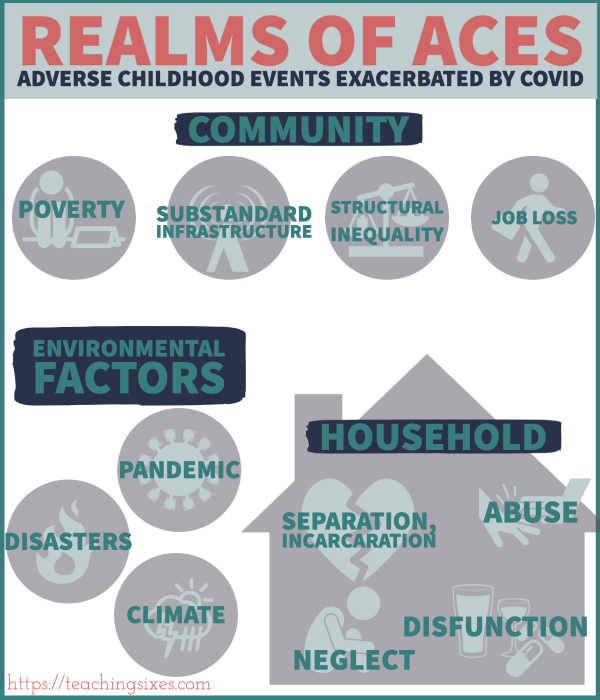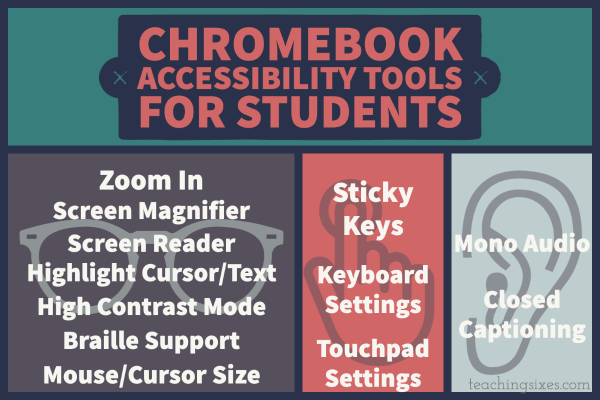*This is a “nuts and bolts” post of ideas for classroom teachers. Find the full academic post I wrote for my Digital Education Leadership graduate class at Seattle Pacific University here.
Empowering students to be resilient, confident learners during a pandemic is a tricky task. Here are 6 mindset shifts educators should consider to help their students gain confidence and independence.
Shift 1: Rethink the ACEs
Trauma informed teaching centers on the 10 categories of Adverse Childhood Experiences, which center on abuse and neglect in students’ home lives. But, as we enter the 2nd year of this pandemic, we must drastically expand our understanding of what constitutes an Adverse Childhood Experience to include community and environmental circumstances. For example, structural inequality with a child’s community contributes to poverty and substandard infrastructure, which have a disproportionate impact on children when their school buildings are closed and access to resources that may make up for some of those issues (such as school lunch or school wifi) is removed.
An excellent infographic at the Aces Connection Blog deposits the usual ACE categories into the Household sub-category (find the post here), and adds environmental and community factors that directly impact household ACEs. The graphic below is a simplified version of the Aces Connection graphic.

Shift 2: Rethink Tech Distribution
Talk to students and parents, and ensure that your school has considered all of the hurdles minority families face in accessing technology. For example: “language barriers, concerns around being responsible for expensive equipment, distrust of strangers coming to their home to deliver equipment, and requiring a government-issued ID to deliver or receive equipment. . . presented a significant barrier for some EL families” (Uro, 2020, p. 10). An adaptation as simple as requiring a signature instead of a government-issued ID allows students to access technology and take the first step toward technology independence.
Shift 3: Keep an Equity Mindset
Once students can access learning through technology, it is essential to ensure lessons and instructions are created in a way that allows students to access learning and complete the assignment with minimal adult intervention. This may take the form of expanded instructions, teaching students how to access language tools, or modified assignments allowing greater choice in their completion method.
Students with disabilities benefit from technology tools that allow greater choice in how they access the lesson and instructions. For example, chrome books provide accessibility settings that allow students to modify their learning experience to accommodate physical and learning disabilities. Teaching students to use these settings allows them to control their learning environment in ways that facilitate access.

Shift 4: Flexibility = Letting Go
One way to be flexible and supportive of students is to relinquish some control typically held by teachers to the students (with supervision). Specifically, consider letting to of control over Pace, Place, Path, and Time.
The AVID program divides academic options for student control into the following areas: pace, place, path, and time (learn more here). Each of these is a different way that students can take ownership over the form of their learning.
- Pace flexibility is useful for students who have learning disabilities and English language learners. A no-prep way to be flexible on pace is to not deduct points for late assignments and allow a grace period for completion. A low prep way to be flexible on pace is to teach kids to use google calendar and include you on their deadlines.
- Path is described as “the most empowering component of the four” in that it allows students do choose the method of learning that works best for them (Beckerman, 2021). Path flexibility traditionally includes modifying assignments, but you can also allow students to choose their paths to showing their learning within multiple choices. If you allow them to choose using a google form, sorting the spreadsheet that the form auto-populates based on their responses automatically creates peer work groups.
- Time and Place are built in to remote learning — students do asynchronous work at times that work for them, and work in spaces that they prefer. However, teaching students to find spaces that are conducive to learning may require conversations about removing or drowning out distractions, and flexible seating.
Shift 5: Let Students Drive SEL
We all know Social Emotional Learning is important, however, as many students experience the stressors and trauma of learning through a pandemic, teacher led social emotional learning can feel irrelevant, inauthentic and result in student disengagement. Fortunately, letting kids take the lead on social emotional aspects as you monitor and redirect as needed is surprisingly easy and effective.
Low Prep Ways to Empower Students in SEL:
- Explore ways students can connect via your school’s tech tools
- Use your LMS to organize online clubs
- Set up a doc kids can build and expand on in your google classroom (for example our class has a student created Joke Book to which everyone has edit access)
- Add a thread for specific groups of students to chat and share resources on google classroom, and set it so only those students can see it.
- Allow social breakout rooms after class to give students a safe space provide support for each other or just play games.
- Help students understand the social elements of tools available to them through the school.
- Maximize student choice in breakout rooms with the “let participants choose their room” setting.
- Use Scott Todnem’s excellent idea of adding an extra breakout room where students can check in with you one-on-one (logistically, I like to use in the main room for tutoring so I can see kids enter the waiting room, then label your extra room “teacher talk” and teach kids to let me know they need to talk then meet me in the teacher talk room. Other students will know the child is meeting with you, but will not know why)
- Let kids play video games in breakout rooms after class but check in often. “Among Us” for example, is essentially a murder mystery that requires critical thinking and group discussion.
- Welcome students who just want to chat with each other to your learning support hours, and give them a breakout room (with frequent check ins).
- Allow kids to turn off their cameras (or if your school requires cameras on, allow them to point them to the ceiling
Shift 6: Rethink What Counts as Learning
The shift to remote learning during a difficult time requires a shift in how we value non-academic learning. This is especially true as secondary students roles’ change in their households, as they take on more responsibility due to the shut down of resources their parents depended on (such as child care).
For many students, increased independence in non-academic areas can be facilitated by technology and can have positive impacts on academic technology-based skills. For example, students use TikTok to learn new skills, share hobbies they enjoy, and to teach others skills. While using TikTok to pursue their interests and dive into a community of fellow users with shared hobbies, students are also building emotional resiliency and taking ownership of their interest-based learning. As such, educators benefit from reframing our understanding of traditionally non-academic technology tools.
Sources
AVID. (2021). Empower Students Through Creativity and Choice. Avid Open Access. Retrieved from: https://avidopenaccess.org/course/empower-students-through-creativity-and-choice/
Beckerman, P. Clark, R. Beckerman, P. (2021, January 13). Empower Students by Allowing Them Control of Pace, Place, Path, and Time in Blended Learning [Podcast]. Avid Open Access. Retrieved from: https://avidopenaccess.org/podcast/empower-students-by-allowing-them-control-of-pace-place-path-and-time-in-blended-learning/
Community Counseling Centers of Chicago. (2014). Ace awareness for prevention: adverse childhood experiences. Retrieved from: https://www.acesconnection.com/fileSendAction/fcType/5/fcOid/406624864726144615/fodoid/406624864726144614/C4%27s%20ACE%20booklet%2011-14.pdf
Google (2020). Devices designed for all learners. Retrieved from: https://edu.google.com/why-google/accessibility/chromebooks-accessibility/
Google Chrome (2017). Chrome and chrome OS accessibility [Playlist]. Retrieved from: https://youtube.com/playlist?list=PL5aqr5w5fRe7QWzXhqxrilIVduWEmLHM2
Smith, O. (2021, January 21). The TikTok Effect: How A Generation Of Social Media Users Find New Hobbies. Grit Daily. Retrieved from: https://gritdaily.com/the-tiktok-effect-how-a-generation-of-social-media-users-find-new-hobbies/
Stevens, J. (2017, January 17). 3 realms of ACEs [Infographic] Got your ACE, resilience scores? ACEs Connection. Retrieved from: https://www.acesconnection.com/blog/got-your-ace-resilience-scores
Todnem, S. (2020, October 26). Remote learning tip: [tweet]. Retrieved from: https://twitter.com/ScottAmpersand/status/1320762535134531590
Uro, G. Lai, D. et al (2020, August) Supporting english learners in the COVID-19 crisis. Council of the Great City Schools. Retrieved from: https://www.cgcs.org/cms/lib/DC00001581/Centricity/domain/35/publication%20docs/CGCS_ELL%20and%20COVID_web_v2.pdf

As someone still navigating this field, I find your posts really helpful. My site is Article Star and I’d be happy to have some experts about SEO like you check it and provide some feedback.